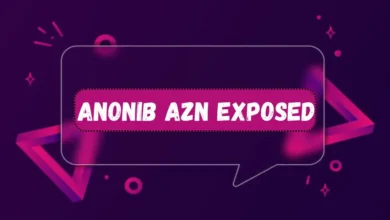Unlocking the World of LoveLolaBlog Codes: Your Complete Guide

LoveLolaBlog Codes If you’ve ever stumbled upon LoveLolaBlog and thought, “There has to be a way to save money here,” you’re absolutely right. Welcome to the world of LoveLolaBlog codes—a smart shopper’s best friend. Whether you’re a regular reader of the blog or just discovering it for the first time, this guide will help you understand everything there is to know about discount codes, how to find them, and how to use them to your advantage.
Let’s dive in and explore how you can level up your shopping game with LoveLolaBlog codes.
What Are LoveLolaBlog Codes?
LoveLolaBlog codes are essentially promotional or discount codes that allow readers and customers to save money on various fashion, beauty, and lifestyle products promoted through the LoveLolaBlog platform. These codes are often shared as a way to give back to the loyal audience or to promote collaborations with brands.
These aren’t your typical “10% off” deals you see everywhere. Many of these codes are exclusive, meaning you won’t find them just anywhere online. LoveLolaBlog often partners with specific brands to bring these deals directly to its followers. From high-end skincare to trendy apparel, these codes cover a range of lifestyle items.
And it’s not just about discounts. Sometimes the codes offer free gifts, early access to new launches, or free shipping—which, let’s be honest, is always a win. It’s part of the blog’s charm: stylish recommendations plus ways to make them more affordable.
Where to Find LoveLolaBlog Codes

The good news? You don’t need to go digging through shady coupon sites to find LoveLolaBlog codes. In fact, there are multiple legitimate and easy ways to locate them:
- On the Blog Itself
Often, LoveLolaBlog will include exclusive codes within its posts. Look out for posts that highlight brand partnerships or product reviews—there’s usually a hidden gem (aka a discount code) tucked inside. These are usually time-sensitive, so it pays to read the blog regularly. - Through Social Media Channels
LoveLolaBlog’s Instagram and TikTok are great places to find up-to-date codes. Influencers often use Stories, Reels, or captions to share limited-time codes with their followers. If you’re not following the blog on socials, you might be missing out on flash deals. - Newsletter Subscriptions
Another hot spot for codes is the LoveLolaBlog email list. Subscribers often receive early-bird access to codes and promotions. It’s a great way to stay in the loop—and honestly, it’s nice having a discount code land in your inbox instead of having to hunt for it.
How to Use LoveLolaBlog Codes Effectively
Now that you know where to find them, let’s talk about how to use LoveLolaBlog codes effectively to maximize your savings. The first step? Timing is everything. Many of the best codes are seasonal—think holiday sales, Black Friday, or end-of-season clearances. So plan your purchases around those windows if you can.
Also, stack your discounts whenever possible. Some brands allow you to combine LoveLolaBlog codes with other promotions, like free shipping offers or bundle deals. That’s where the magic happens—you save twice and walk away with more value.
And lastly, make sure you’re entering the code correctly at checkout. Sounds obvious, but one tiny typo can make the difference between paying full price or scoring a sweet deal. Double-check expiration dates too; there’s nothing worse than a code expiring the day before you use it.
The Benefits of Following LoveLolaBlog for Deals
Using discount codes is only one part of the bigger LoveLolaBlog picture. What sets this blog apart is the combination of authentic lifestyle content and budget-savvy hacks. You’re not just buying a product; you’re buying something that’s been tried, tested, and approved by someone you trust.
That trust is key. LoveLolaBlog codes aren’t random affiliate links. They’re thoughtfully selected promotions, often tied to honest reviews and curated product guides. It’s that personal touch that turns a reader into a loyal follower—and a buyer into a savvy shopper.
Plus, if you’re someone who values aesthetic, you’ll appreciate the way these deals are presented. The blog’s overall vibe makes everything feel polished, purposeful, and Pinterest-worthy, even when you’re shopping on a budget.
Tips for Staying Updated on LoveLolaBlog Codes
Want to make sure you never miss a deal? Here are a few tips to stay in the loop:
- Turn on Instagram notifications for LoveLolaBlog so you’re alerted when new codes drop in Stories.
- Bookmark the blog’s discount section (if available) and check in weekly.
- Create a “shopping folder” in your inbox and filter all LoveLolaBlog emails there so you can browse codes quickly.
- Join community groups or forums (like Reddit or Facebook groups) where other fans of the blog might share active deals or upcoming promotions.
Consistency is key—just like with skincare or fitness, you’ll get the best results from being proactive. And with the right habits, you’ll never pay full price again.
Final Thoughts: Why LoveLolaBlog Codes Are Worth Using
In a world full of generic coupon sites and clickbait deals, LoveLolaBlog codes offer something refreshingly different: real savings on real recommendations. It’s not just about the discount—it’s about aligning your spending with your style, your budget, and your values.
Whether you’re a first-time reader or a long-time fan, these codes give you the freedom to shop smartly without sacrificing quality or taste. And as long as LoveLolaBlog keeps serving up its signature mix of style and savings, you can rest easy knowing your next great deal is just a click away.
Let me know if you’d like this formatted into a blog post template (HTML or WordPress format), or if you want me to create a few LoveLolaBlog-inspired promo banners to go along wi
Unlocking the World of LoveLolaBlog Codes: Your Complete Guide
If you’ve ever stumbled upon LoveLolaBlog and thought, “There has to be a way to save money here,” you’re absolutely right. Welcome to the world of LoveLolaBlog codes—a smart shopper’s best friend. Whether you’re a regular reader of the blog or just discovering it for the first time, this guide will help you understand everything there is to know about discount codes, how to find them, and how to use them to your advantage.
Let’s dive in and explore how you can level up your shopping game with LoveLolaBlog codes.
What Are LoveLolaBlog Codes?
LoveLolaBlog codes are essentially promotional or discount codes that allow readers and customers to save money on various fashion, beauty, and lifestyle products promoted through the LoveLolaBlog platform. These codes are often shared as a way to give back to the loyal audience or to promote collaborations with brands.
These aren’t your typical “10% off” deals you see everywhere. Many of these codes are exclusive, meaning you won’t find them just anywhere online. LoveLolaBlog often partners with specific brands to bring these deals directly to its followers. From high-end skincare to trendy apparel, these codes cover a range of lifestyle items.
And it’s not just about discounts. Sometimes the codes offer free gifts, early access to new launches, or free shipping—which, let’s be honest, is always a win. It’s part of the blog’s charm: stylish recommendations plus ways to make them more affordable.
Where to Find LoveLolaBlog Codes
The good news? You don’t need to go digging through shady coupon sites to find LoveLolaBlog codes. In fact, there are multiple legitimate and easy ways to locate them:
- On the Blog Itself
Often, LoveLolaBlog will include exclusive codes within its posts. Look out for posts that highlight brand partnerships or product reviews—there’s usually a hidden gem (aka a discount code) tucked inside. These are usually time-sensitive, so it pays to read the blog regularly. - Through Social Media Channels
LoveLolaBlog’s Instagram and TikTok are great places to find up-to-date codes. Influencers often use Stories, Reels, or captions to share limited-time codes with their followers. If you’re not following the blog on socials, you might be missing out on flash deals. - Newsletter Subscriptions
Another hot spot for codes is the LoveLolaBlog email list. Subscribers often receive early-bird access to codes and promotions. It’s a great way to stay in the loop—and honestly, it’s nice having a discount code land in your inbox instead of having to hunt for it.
How to Use LoveLolaBlog Codes Effectively
Now that you know where to find them, let’s talk about how to use LoveLolaBlog codes effectively to maximize your savings. The first step? Timing is everything. Many of the best codes are seasonal—think holiday sales, Black Friday, or end-of-season clearances. So plan your purchases around those windows if you can.
Also, stack your discounts whenever possible. Some brands allow you to combine LoveLolaBlog codes with other promotions, like free shipping offers or bundle deals. That’s where the magic happens—you save twice and walk away with more value.
And lastly, make sure you’re entering the code correctly at checkout. Sounds obvious, but one tiny typo can make the difference between paying full price or scoring a sweet deal. Double-check expiration dates too; there’s nothing worse than a code expiring the day before you use it.
The Benefits of Following LoveLolaBlog for Deals
Using discount codes is only one part of the bigger LoveLolaBlog picture. What sets this blog apart is the combination of authentic lifestyle content and budget-savvy hacks. You’re not just buying a product; you’re buying something that’s been tried, tested, and approved by someone you trust.
That trust is key. LoveLolaBlog codes aren’t random affiliate links. They’re thoughtfully selected promotions, often tied to honest reviews and curated product guides. It’s that personal touch that turns a reader into a loyal follower—and a buyer into a savvy shopper.
Plus, if you’re someone who values aesthetic, you’ll appreciate the way these deals are presented. The blog’s overall vibe makes everything feel polished, purposeful, and Pinterest-worthy, even when you’re shopping on a budget.
Tips for Staying Updated on LoveLolaBlog Codes
Want to make sure you never miss a deal? Here are a few tips to stay in the loop:
- Turn on Instagram notifications for LoveLolaBlog so you’re alerted when new codes drop in Stories.
- Bookmark the blog’s discount section (if available) and check in weekly.
- Create a “shopping folder” in your inbox and filter all LoveLolaBlog emails there so you can browse codes quickly.
- Join community groups or forums (like Reddit or Facebook groups) where other fans of the blog might share active deals or upcoming promotions.
Consistency is key—just like with skincare or fitness, you’ll get the best results from being proactive. And with the right habits, you’ll never pay full price again.
Final Thoughts: Why LoveLolaBlog Codes Are Worth Using
In a world full of generic coupon sites and clickbait deals, LoveLolaBlog codes offer something refreshingly different: real savings on real recommendations. It’s not just about the discount—it’s about aligning your spending with your style, your budget, and your values.
Whether you’re a first-time reader or a long-time fan, these codes give you the freedom to shop smartly without sacrificing quality or taste. And as long as LoveLolaBlog keeps serving up its signature mix of style and savings, you can rest easy knowing your next great deal is just a click away.



